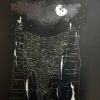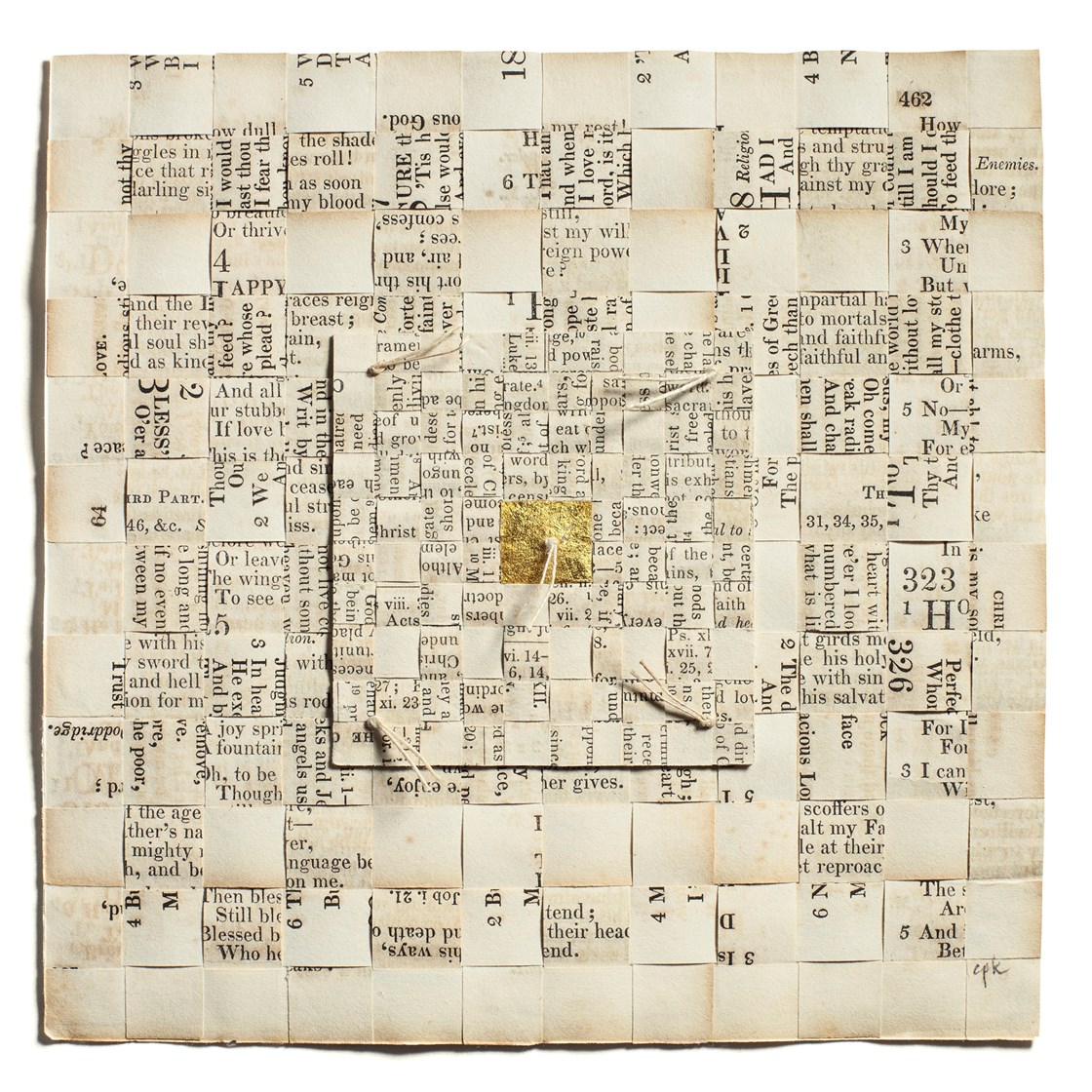Carole Kunstadt
Sacred Poem XXXIII
gold leaf, linen thread, paper: pages from Parish Psalmody dated 1844
6 x 6 in.
The primary element used in this series is paper: the pages are taken from two volumes of a Parish Psalmody dated 1844 and 1849. These pages of psalms are manipulated and recombined, resulting in a presentation that evokes an ecumenical offering: poems of praise and gratitude. The aged text suggests the temporal quality of our lives and the vulnerability of memory and history. Utilizing both a reductive and additive process, embracing its inherent qualities while transforming the book’s pages, the paper itself gains significance through the process and merges with a new intent.
Visually there is a consistent and measured cadence to a page of psalms which is echoed in the repetitive weaving or restructuring of the paper: pages are cut in strips and woven creating an altered dense surface. Although aged, the paper is surprisingly resilient. The knotting emphasizes the repetition of the lines of text – suggestive of the passage of time, alluding to the age and the history contained within.
The continuous repetitive action of sewing, knotting and weaving is similar to reciting, singing, and reading: implying that through the repetition of a task or ritual one has the possibility to transcend the mundane. The use of gold leaf elevates and heightens the rich textural qualities presenting a sumptuous visual experience. The interplay alludes to the enticing presentation of illuminated texts historically. Explored and displayed in this visual context, the alteration of the papers’ linear, tactile, and facile nature emphasizes transformation, while the possibility of revelation is playfully realized.
The intended use, as well as the nature of a psalm as spiritual repository, both imply a tradition of careful devotion and pious reverence. The physical text evocatively and powerfully serves as a gateway to an experience of the sacred and the realization of the latent power of the written word. This process of interaction is played out visually in the piece, mimicking the internal experience. Thus, through the individual evolution of each page, culminating in a transformation of the whole volume, the material and the conceptual interface delicately and suggestively with one another.
© Carole Kunstadt



